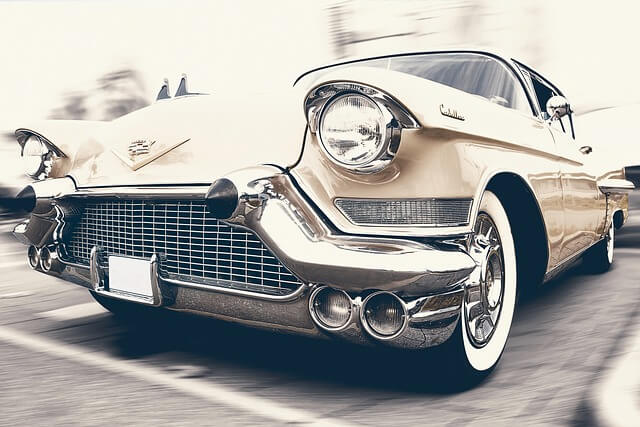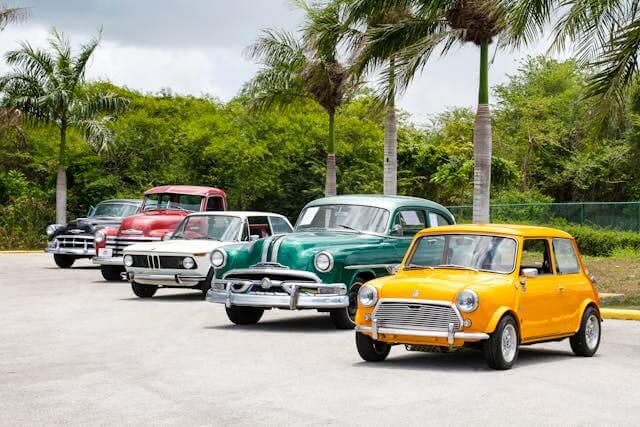When it comes to automotive enthusiasts, vintage cars hold a unique allure, embodying a blend of nostalgia, craftsmanship, and character that modern vehicles often lack. Buying a vintage car can be an exciting journey, but it also comes with its own set of challenges and considerations. With countless makes, models, and conditions to choose from, prospective buyers must navigate this intricate market with care. This guide aims to provide essential tips for both novice and seasoned collectors, helping you make informed decisions while pursuing your dream classic vehicle. From understanding the history and market trends to knowing what to inspect before making a purchase, we will cover all you need to know for a successful vintage car buying experience.

1. Researching Your Preferred Make and Model
Before diving into the world of vintage car buying, it’s crucial to conduct thorough research on the makes and models that pique your interest. Familiarise yourself with the specifications, the history of each model, and any common issues that owners face. This will not only equip you with the knowledge needed to make an informed choice but also help you identify a vehicle that matches your style and preference.
Exploring forums, classic car clubs, and online resources can provide invaluable insights from experienced owners and collectors. Engaging with these communities can offer access to valuable tips, recommendations, and even leads on available vehicles. With a well-informed approach, you’ll be better prepared to evaluate options as they arise. Plus, Alex Manos an expert vintage cars club owner, and other professionals can help you navigate the market for your preferred make or model. They can provide additional information, such as current market values and potential future trends, to help guide your decision-making process.
2. Setting a Budget
Determining a realistic budget is a vital step in the vintage car purchasing process. Vintage vehicles can range from affordable classics to rare collectors’ items with hefty price tags, so it’s paramount to decide how much you’re willing to spend. Factor in not just the purchase price but also costs associated with restoration, maintenance, insurance, and potential storage.
Being equipped with a budget will also help you avoid impulsive purchases that may drain your finances. Take the time to evaluate the total investment required and create a budget that allows for both the car and its upkeep over time, ensuring your vintage car remains a joy, rather than a financial burden.
3. Inspecting the Vehicle
When you’ve found a potential vintage car, conducting a thorough inspection is essential. Look for signs of rust, corrosion, and structural damage, as these can indicate more significant issues that may require costly repairs. Checking for the authenticity of parts and the overall condition of the engine, transmission, and brakes should also form a part of your evaluation process.
It’s also wise to consider hiring a qualified mechanic who is experienced with vintage vehicles to conduct a detailed inspection. Their expertise can uncover hidden problems that you might overlook and provide a clearer perspective on the restoration work required to maintain the car’s performance and value.
4. Verifying Documentation
Ensuring that a vintage car comes with the proper documentation is crucial for a smooth purchasing experience. This includes the title, registration, service history, and documentation of any restorations or modifications made over the years. Confirming authenticity through these records can significantly influence the vehicle’s value and provide assurance about its history.
Validate the Vehicle Identification Number (VIN) against the documents to avoid fraudulent transactions. A clear, verifiable ownership history can add confidence to your purchase and may even enhance the car’s value in the long run, making it a more worthwhile investment.
5. Understanding Market Trends
The vintage car market can be volatile, making it essential to stay informed about current trends, values, and collector’s interests. Different makes and models may experience fluctuating popularity, which can affect their resale value. Following auctions, sales reports, and collector events can offer insights into which models are gaining traction and which are fading out of favor.
Subscribing to classic car magazines or engaging with online platforms dedicated to vintage automobiles can keep you updated on market shifts and forecast potential investment opportunities. Understanding the market landscape will allow you to make decisions that align with both your passion and financial goals.
6. Building Relationships with Sellers
Establishing a rapport with sellers can improve your chances of securing a great deal on a vintage car. Whether you’re dealing with private sellers, dealerships, or auctions, building trust can lead to a more comfortable negotiating process. Engage with them, ask questions, and express genuine interest in their vehicles; this may open doors to undisclosed information and even influence pricing.
Maintaining these relationships can prove beneficial for future purchases or sales. Networking within the vintage car community can provide access to exclusive sales opportunities, insider information on rare finds, and a supportive environment as you navigate your journey as a vintage car enthusiast.

Buying a vintage car requires dedication, patience, and an understanding of the market. With these essential tips in mind, you can make informed decisions and find your dream classic vehicle to cherish for years to come. Remember always to consult with experts, do your research, and trust your gut when it comes to making the right choice.
















Leave a Reply